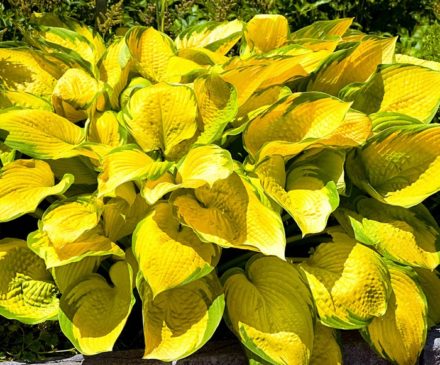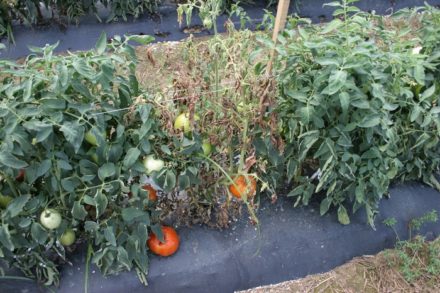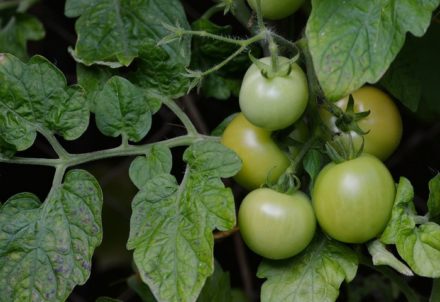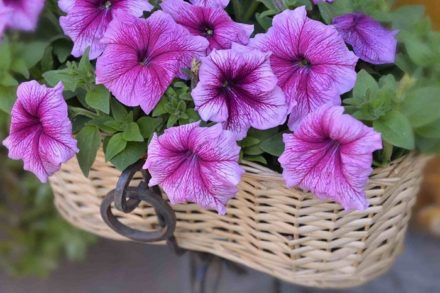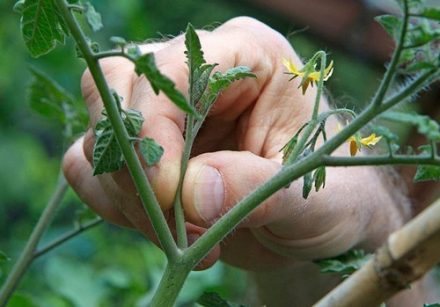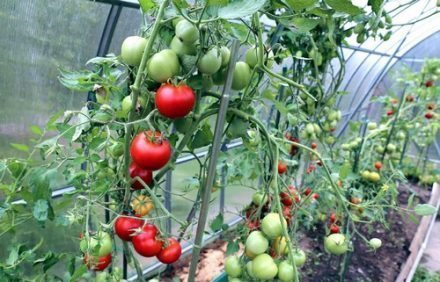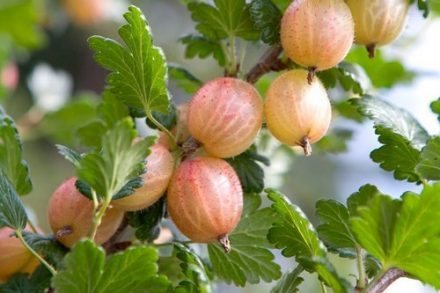When growing tomatoes, certain problems may arise. Sometimes when planting tomatoes in open ground, the tops or leaves of the bushes begin to turn yellow. This or that variety turns yellow to varying degrees. In the future, such plants produce low yields or do not bear fruit at all, stunting their growth. These tomatoes are of no use. This phenomenon can continue in a certain place for several years. The reasons for this yellowing of leaves deserve careful study.
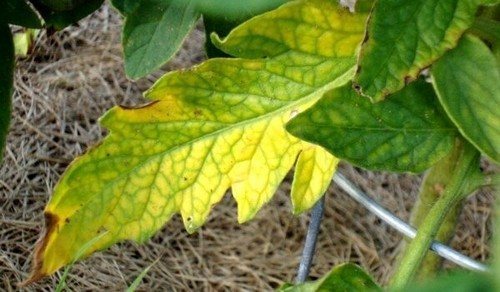
Disease factors
All plants become infected through the roots, which feed them. Tomatoes love a slightly acidic environment. Yellowing of leaves on bushes can occur for the following reasons:
- The microclimate does not match the variety. Tomatoes are suitable for daytime soil temperatures of +25 °C, and nighttime soil temperatures of +20 °C. They love bright lighting, but not direct sunlight on them. The soil should be moderately moist. Seedlings must also be grown in optimal conditions.
- There are not enough life-giving substances. The most common deficiency is iron and nitrogen. It is because of this that the leaves most often turn yellow.
- The activity of the root system is disrupted. This can occur when transplanting seedlings into open ground or a greenhouse. Old foliage may dry out and fly off. When the tomatoes take root, they will grow new leaves again.
- They are susceptible to various diseases (fusarium, late blight).
- They are affected by pests: aphids, whiteflies, spider mites.They draw juices from the bushes, so the leaves begin to turn yellow.
- The soil has not yet warmed up to the required temperature. The root system is under stress.
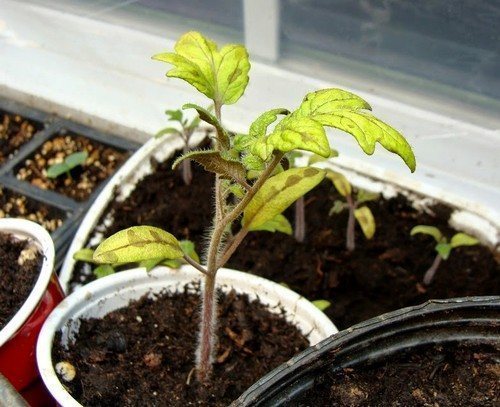
Iron deficiency
The main problem with yellowing of tomato foliage is chlorosis associated with iron deficiency. Bushes are very sensitive to this phenomenon. Experienced gardeners advise in this case to add ash and ash solutions to the soil. There is also comprehensive care for such plants. Foliar feeding will not help balance nutritional deficiencies. You also need to add nutrients to the soil.
To mobilize iron production, the soil must be acidified. In this case, vinegar dressing is suitable. You can take homemade apple cider vinegar, essence, 9% table vinegar. For one bucket of water you need to dilute 0.3 liters of vinegar and 15 ml of ammonia. Under each bush, pour 0.5 liters of this solution, only onto prematurely moistened soil. This fertilizing can be supplemented with organic fertilizers. They contain a lot of nitrogen, which is so necessary for increasing the vegetative mass of plants.
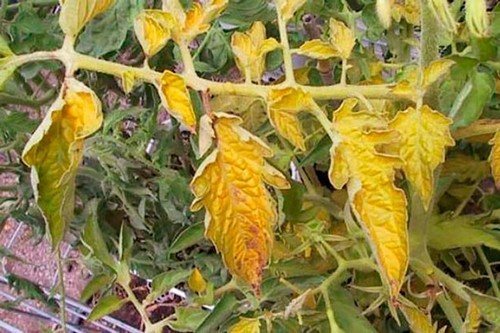
Helping plants in other cases
To help tomatoes starting to turn yellow, you need to normalize watering. If there is not enough moisture, then the leaves also wither. Tomatoes should be watered infrequently, but abundantly. A suitable regimen would be 2 times a week. You need to place bowls of water near the plants growing in the greenhouse.
In addition to these measures, it is necessary to feed the bushes with a solution of ash and complex fertilizers. Special growth stimulants will also help. Here's what they're rich in:
- Auxins. They help to form a strong root system, quick survival when planting.
- Cytokinins. They promote the growth of green mass, the formation of new shoots.
- Gibberellin. Affects the abundance of flowering and the formation of fruits.
- Humic acids. They increase the immunity of tomatoes, resistance to adverse climates.
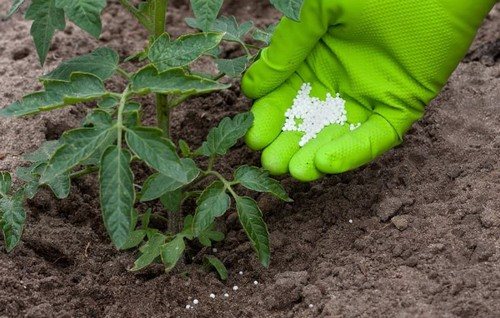
The use of stimulants and folk remedies
The chemical industry offers many drugs to stimulate the growth and development of bushes. Here are the most common and proven products:
- "Stabilan";
- "Heterouxin";
- "Bud";
- "Zircon";
- "Energen";
- "Kornevin".
You can replace biological products with stimulants based on folk recipes. One of them is a solution of aloe juice. It has excellent bactericidal properties. First, aloe leaves must be minced, then infused for 2 weeks in the refrigerator. For 10 liters of water, a glass of such an infusion is enough. It is recommended to water young plants at the root with the resulting solution.
Natural honey is an effective development stimulant. It also reduces the likelihood of fungal diseases. The solution is prepared at the rate of 1 tbsp. per 1 liter of water. It is suitable for seedlings and young bushes.

Elimination of diseases
One of the reasons for yellowing of foliage is dangerous diseases. They are provoked by various factors: excess moisture, improper care, fungi, pests. Most often, leaves turn yellow when infected with fusarium. Both young and mature plants can get sick.The leaves first turn yellow, then curl and wither. The bush begins to hurt from below. Such infected plants should be eliminated to prevent them from infecting other plants. As a preventive measure, frequent loosening of the soil and removal of weeds is necessary.
Tomatoes are often infected with late blight. It also begins with yellowing of the foliage, which then dries out and the leaves die off. Excess moisture provokes the disease. It is important to treat the bushes with suitable preparations in rainy summers: “Ridomil”, “Quadris”, “Fitosporin”, “Trichovit”. A tincture of iodine with milk is suitable as a preventive measure. To a bucket of water, just add a liter of milk and 15 drops of iodine. You need to spray the bushes with this solution. A protective film forms on the leaves, through which the fungus cannot penetrate.
Yellowing foliage on tomatoes signals trouble. In this case, it is necessary to act immediately, otherwise you will not wait for ripe fruits.


